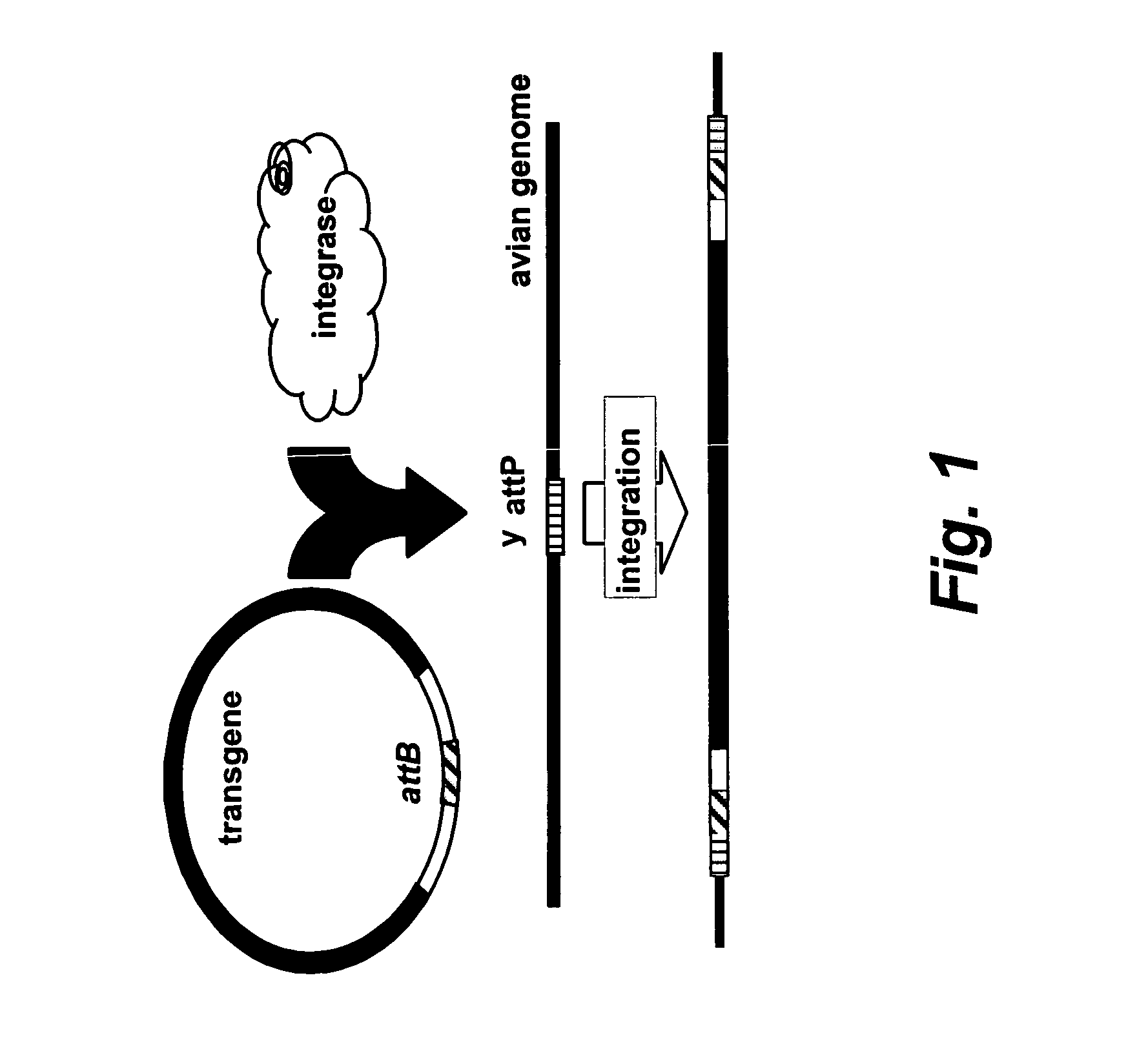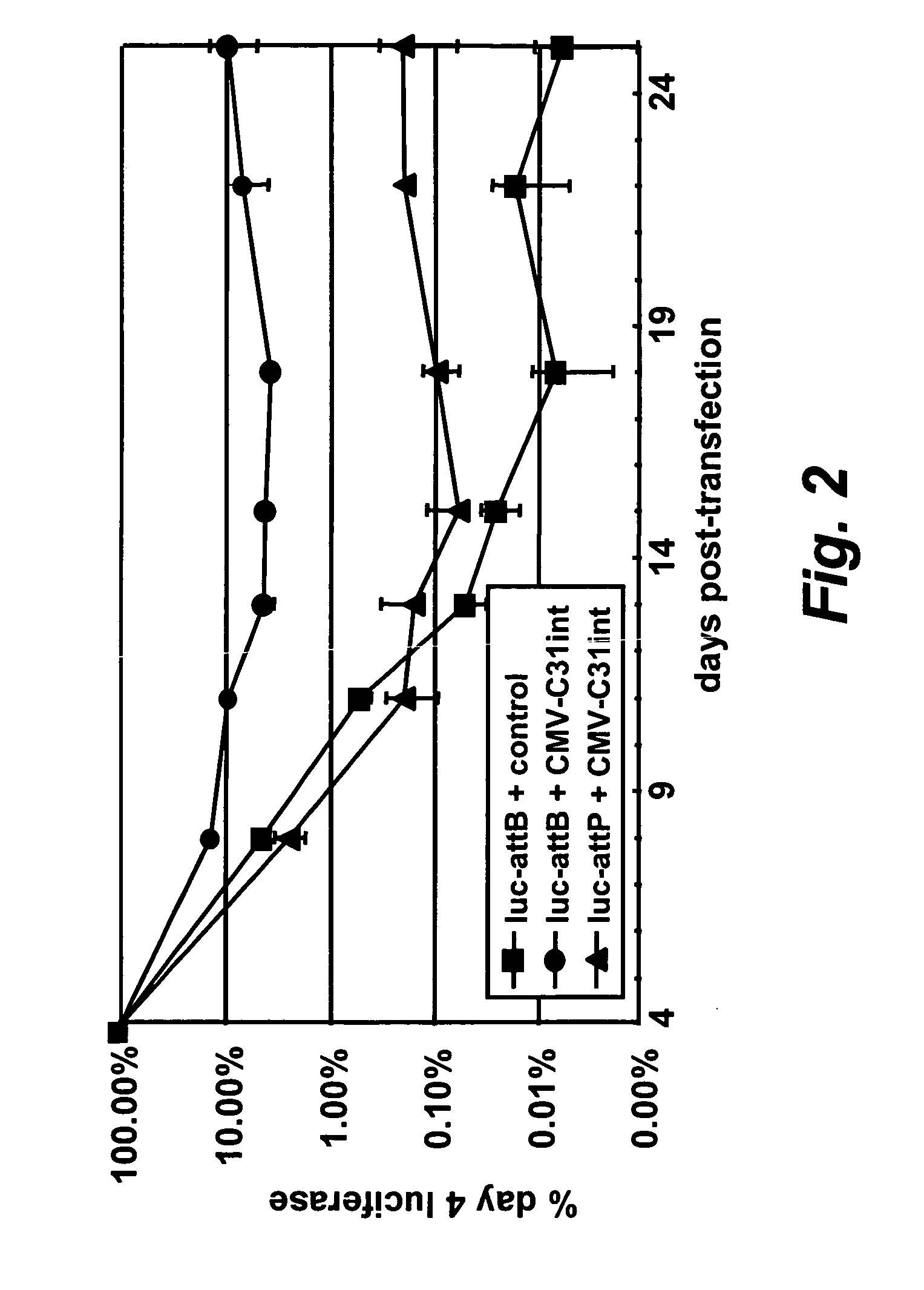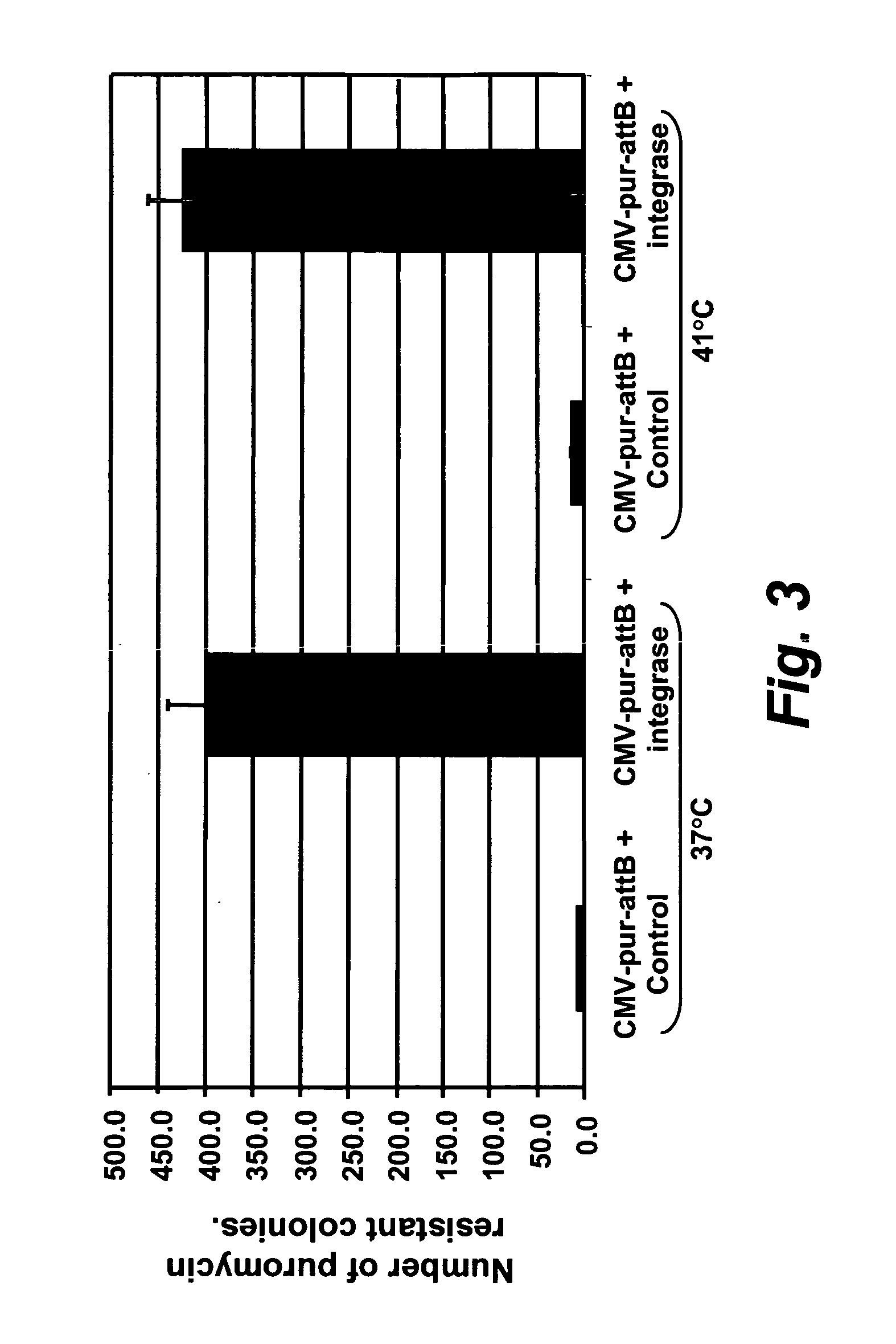Site specific nucleic acid integration
a nucleic acid and site technology, applied in the field of biotechnology, can solve the problems of inefficiency of transgene transgene transgene random inserting methods into the genome, and achieve the effect of improving the predictability of transgene expression
- Summary
- Abstract
- Description
- Claims
- Application Information
AI Technical Summary
Benefits of technology
Problems solved by technology
Method used
Image
Examples
example 1
Phage phiC31 Integrase Functions in Avian Cells
[0239][0239] (a) A luciferase vector bearing either an attB (SEQ ID NO: 2 shown in FIG. 10) or attP (SEQ ID NO: 3 shown in FIG. 11) site was co-transfected with an integrase expression vector CMV-C31int (SEQ ID NO: 1) into DF-1 cells, a chicken fibroblast cell line. The cells were passaged several times and the luciferase levels were assayed at each passage.
[0240] Cells were passaged every 3-4 days and one third of the cells were harvested and assayed for luciferase. The expression of luciferase was plotted as a percentage of the expression measured 4 days after transfection. A luciferase expression vector bearing an attP site as a control was also included.
[0241] As can be seen in FIG. 2, in the absence of integrase, luciferase expression from a vector bearing attP or attB decreased to very low levels after several days. However, luciferase levels were persistent when the luciferase vector bearing attB was co-transfected with the in...
example 2
Cell Culture Methods
[0248] DF-1 cells were cultured in DMEM with high glucose, 10% fetal bovine serum, 2 mM L-glutamine, 100 units / ml penicillin and 100 μg / ml streptomycin at 37° Celsius and 5% CO2. A separate population of DF-1 cells was grown at 41° Celsius. These cells were adapted to the higher temperature for one week before they were used for experiments.
[0249] Quail QT6 cells were cultured in F10 medium (Gibco) with 5% newborn calf serum, 1% chicken serum heat inactivated (at 55° Celsius for 45 mins), 10 units / ml penicillin and 10 μg / ml streptomycin at 37° Celsius and 5% CO2.
example 3
Selection and Assay Methods
[0250][0250] (a) Puromycin selection assay: About 0.8×106 DF-1 (chicken) or QT6 (quail) cells were plated in 60 mm dishes. The next day, the cells were transfected as follows:
[0251] 10 to 50 ng of a donor plasmid and 1 to 10 μg of an Integrase-expressing plasmid DNA were mixed with 150 μl of OptiMEM. 15 μl of DMRIE-C was mixed with 150 μl of OptiMEM in a separate tube, and the mixtures combined and incubated for 15 mins. at room temperature.
[0252] While the liposome / DNA complexes were forming, the cells were washed with OptiMEM and 2.5 ml of OptiMEM was added. After 15 minutes, 300 μl of the DNA-lipid mixture was added drop wise to the 2.5 ml of OptiMEM covering the cell layers. The cells were incubated for 4-5 hours at either 37° Celsius or 41° Celsius, 5% CO2. The transfection mix was replaced with 3 mls of culture media. The next day, puromycin was added to the media at a final concentration of 1 μg / ml, and the media replaced every 2 to 4 days. Purom...
PUM
| Property | Measurement | Unit |
|---|---|---|
| concentration | aaaaa | aaaaa |
| concentration | aaaaa | aaaaa |
| concentration | aaaaa | aaaaa |
Abstract
Description
Claims
Application Information
 Login to View More
Login to View More - R&D
- Intellectual Property
- Life Sciences
- Materials
- Tech Scout
- Unparalleled Data Quality
- Higher Quality Content
- 60% Fewer Hallucinations
Browse by: Latest US Patents, China's latest patents, Technical Efficacy Thesaurus, Application Domain, Technology Topic, Popular Technical Reports.
© 2025 PatSnap. All rights reserved.Legal|Privacy policy|Modern Slavery Act Transparency Statement|Sitemap|About US| Contact US: help@patsnap.com



